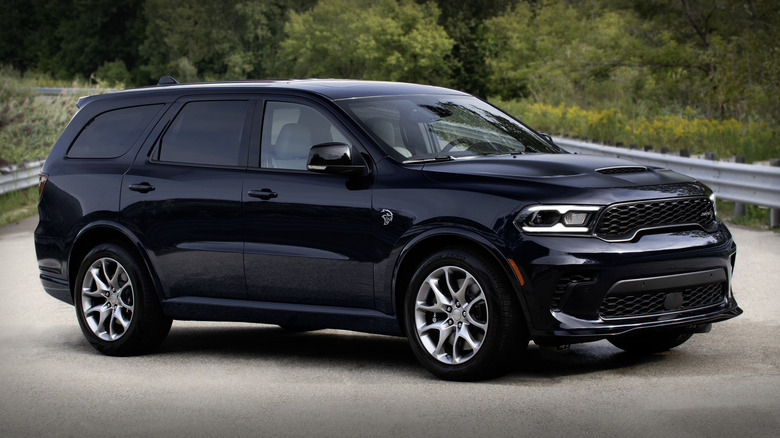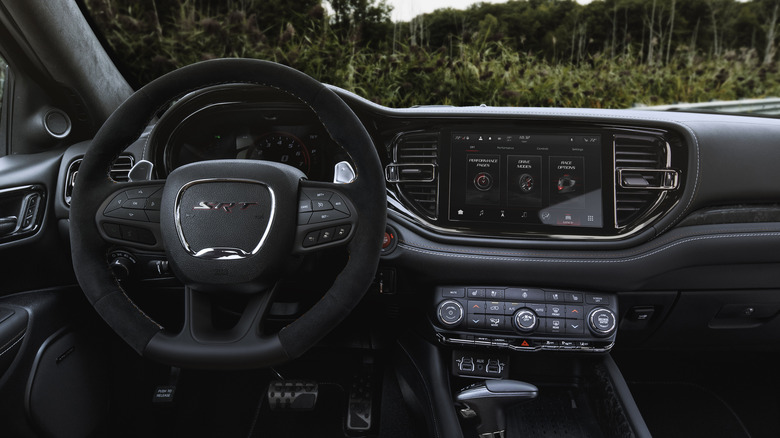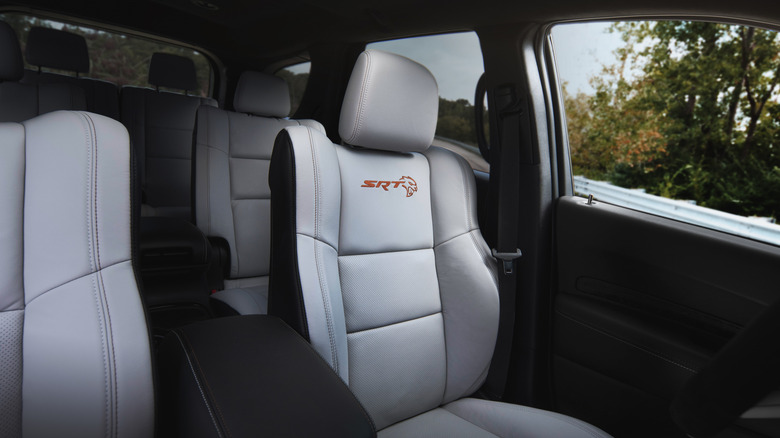Dodge's New 2025 Durango SRT Hellcat Hammerhead Proves The HEMI Isn't Dead Just Yet
One by one, platform by platform, Stellantis is waving goodbye to the vehicles that house the Hellcat engine. We've already bid farewell to the Charger and Challenger, said adieu to the Redeye, and given an off-road goodbye to the Ram TRX. The latest version of the epic powerplant comes in the form of a special-edition three-row SUV that may be one of the last of its kind. The Durango Hellcat hasn't officially been discontinued yet by Dodge, so the big HEMI engine still lives for now, but with multiple special-edition versions being released in succession, we suspect the end is near.
Officially named the Dodge Durango SRT Hellcat Hammerhead Special-edition (a mouthful for sure), the Hammerhead enters the lineup alongside the previously-released Hellcat Silver Bullet. Like the Silver Bullet, the Hammerhead is a special edition of the raucous family SUV with some unique aesthetic touches inside and out, helping to set it apart in a crowd of standard Durangos. And, like other Durangos, the Hellcat Hammerhead still offers three rows of seating, impressive levels of interior comfort, and a snarling-and-whining supercharged-V8 soundtrack. Power is unchanged, provided by the supercharged 6.2-liter V8 that has made near-endless burnouts possible with Hellcat and Hellephant engines over the last decade.
What's unique about the Hellcat Hammerhead?
Under the hood, the 2025 Hellcat Hammerhead produces 710 horsepower and 645 lb-ft of torque, just like the standard SRT Hellcat. And, like the standard SRT Hellcat, Dodge claims that the Hammerhead Special Edition can accelerate from zero to 60 mph in just 3.5 seconds on its way to a quarter-mile time of 11.5 seconds and a top speed of 180 mph. An eight-speed automatic transmission is also standard.
On top of the standard equipment, the Hellcat Hammerhead gets special leather seats wrapped in a Hammerhead Grey Laguna color, dark blue "Night Moves" exterior paint, 20-inch carbon wheels, a satin black hood, bright exhaust tips, six-piston Brembo brakes with painted black calipers, carbon fiber and chrome interior accents, a leather-and-suede wrapped steering wheel, and a suede headliner. None of these features make the Durango any faster, but we're okay with that.
The Hammerhead's acceleration numbers are impressive by even lightweight sportscar standards, but more so when you consider the Durango's significant weight. Dodge hasn't released all the specs on the Hammerhead yet, but we expect it to have a similar weight to the standard SRT Hellcat model, which checks in at 5,575 pounds. To get all that mass moving in such a hurry is no small feat.
How much does the Hellcat Hammerhead cost?
There's no getting around the Hellcat Hammerhead's eye-watering price tag. MSRP for this special edition model is $113,720 (plus destination) – the same price you'll pay for the Silver Bullet edition. Standard Durango models equipped with the 3.6-liter V6 are significantly less expensive, with a 2024 SXT model checking in at $39,670. A Durango R/T with the 5.7-liter HEMI V8 will set you back $51,270, and going with the SRT 392 that uses the 6.4-liter V8 has an MSRP of $74,995. The base 2024 SRT Hellcat, though, is significantly pricier at $95,995 – but that still doesn't come close to the nearly $115k required to drive the Hellcat Hammerhead home.
There are impressive interior touches that help soften the blow of the Hellcat's big price tag — items like configurable drive modes, race options for the infotainment system, and an adjustable launch control — but the real difference is under the hood. With multiple final editions being released over several years of production and across several vehicles, it would appear that Stellantis is having a hard time saying goodbye to the Hellcat engine — and it's hard to blame them.


